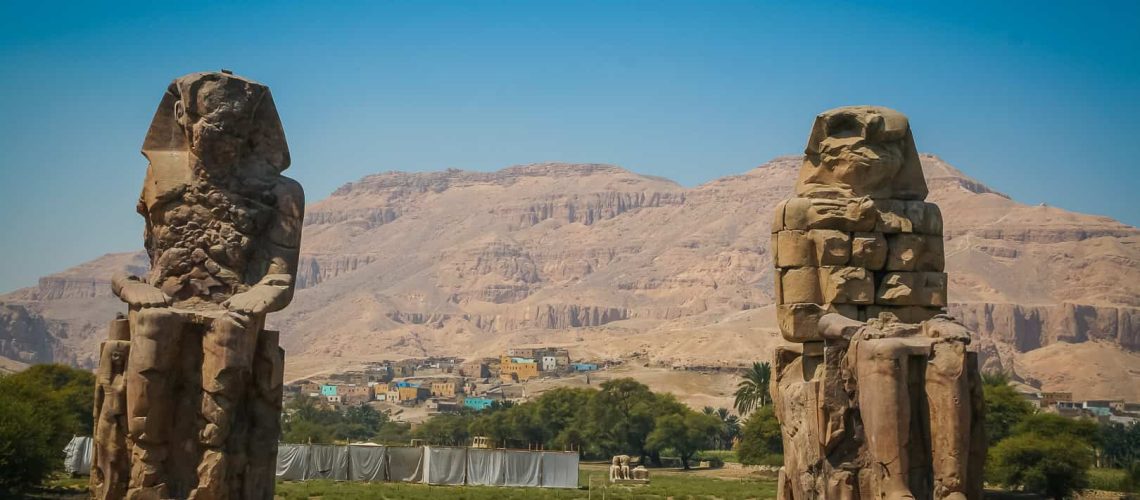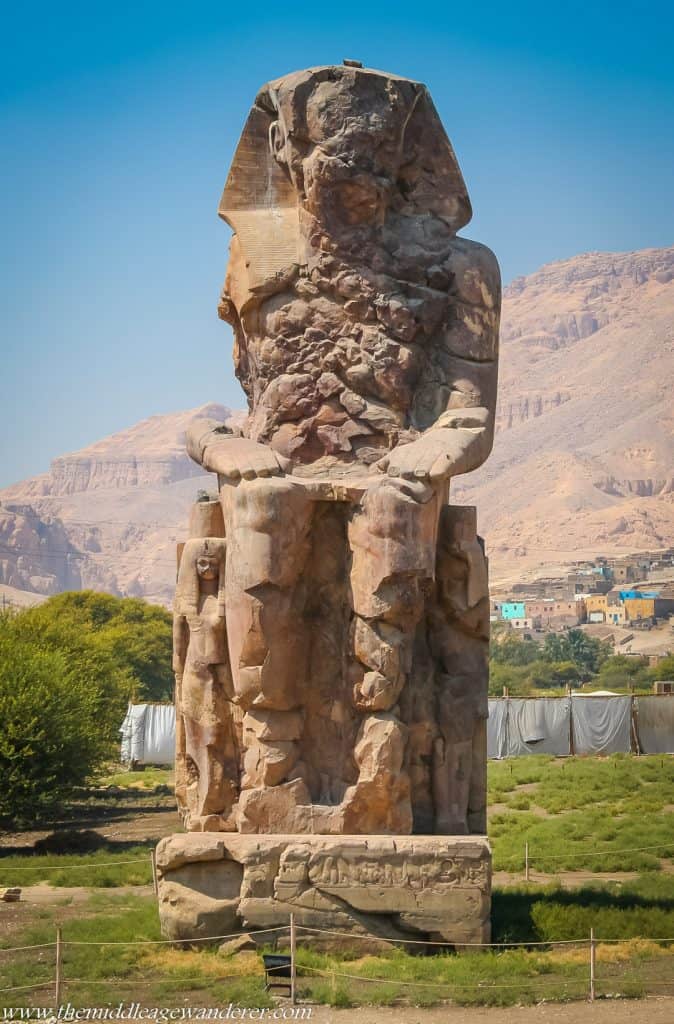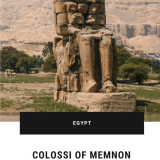Colossi of Memnon

Situated on the west bank of the Nile River, near Luxor, the Colossi of Memnon date back over 3,400 years. Carved from massive sandstone blocks, these towering statues represent Pharaoh Amenhotep III. He was one of the most powerful and prosperous rulers of ancient Egypt. Constructed around 1350 BCE, these colossal twins once graced the entrance of Amenhotep’s mortuary temple, a sprawling complex dedicated to honouring the pharaoh in life and death.
Legend has it that Memnon, a mythical Ethiopian king and son of the goddess Eos, greeted his mother with a sweet melody every morning. Similarly, the Colossi of Memnon were said to emit a mysterious sound at dawn. This phenomenon drew visitors from far and wide. The cause of this phenomenon was later attributed to the statues’ reaction to the morning sun, causing the stone to expand and contract and producing eerie, melodic tones.
The Silent Guardians
Standing at a towering 18 metres or 60 feet, these colossal statues once formed part of an awe-inspiring gateway to Amenhotep III’s grand mortuary temple. Though the temple itself has largely succumbed to the ravages of time and the pillaging of ancient quarries, the Colossi of Memnon stand defiant.
Each colossal figure is expertly carved, with intricate detailing that showcases the skill of the ancient Egyptian artisans. The pharaoh is depicted in a seated position, wearing the traditional royal regalia of the time. A nemes headdress is adorned with the cobra diadem and a pleated kilt. The sheer size and craftsmanship of the statues highlight the power and wealth of Amenhotep III, who presided over a golden age in ancient Egypt.


Modern-Day Marvel
Today, the Colossi of Memnon remain one of Egypt’s most iconic and visited archaeological sites. As you approach, the sheer scale of these ancient guardians is awe-inspiring. They evoke a sense of reverence for the civilisation that once thrived along the banks of the Nile. The statues’ original context may be lost to time, but their presence continues to captivate and inspire those who visit.
The Colossi of Memnon stand as testament to the enduring legacy of a once-mighty pharaoh.
Pin It





